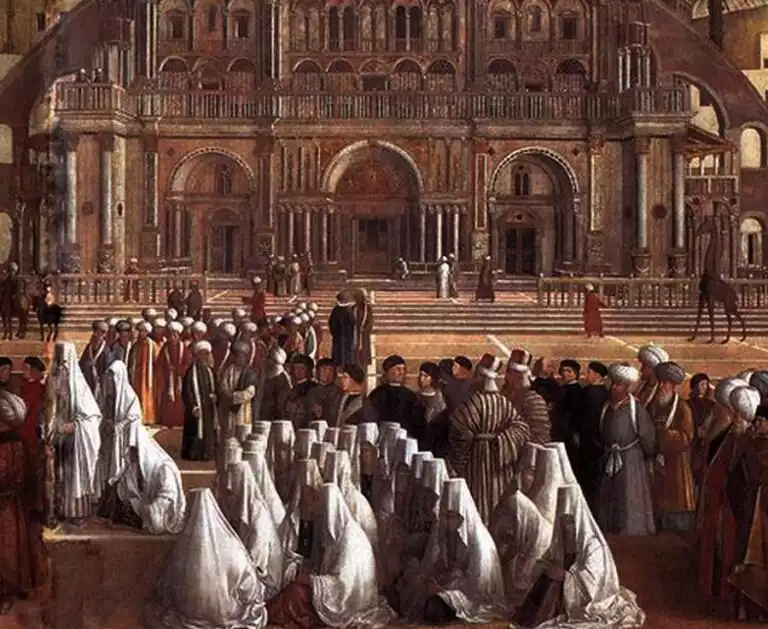
Alleluia, a term resonant with spiritual profundity, serves as an exclamation of praise and worship within various religious traditions. This word, embodying a jubilant spirit, is frequently encountered in Christian liturgies and hymns, symbolizing joyous acclamation and divine adoration. Its etymological roots can be traced to the Hebrew phrase “Hallelujah,” which translates to “Praise the Lord.” The seamless amalgamation of “Hallelu,” meaning “praise,” and “Jah,” a shortened form of “Yahweh,” God’s name in Hebrew, conveys a powerful message of reverence and celebration towards the divine.
In the Christian context, Alleluia’s significance is amplified during specific liturgical seasons, notably Easter, where it epitomizes the joy of Christ’s resurrection. Its usage in worship, accentuated by its musical and lyrical qualities, fosters a sense of communal participation in divine praise.
Biblical Presence and Typology
Alleluia’s biblical presence is notably prominent in the Psalms, a collection of religious songs and prayers in the Old Testament. Psalms such as 104 and 150 exemplify its use, where it serves as a call for collective praise to God for His mighty acts and wondrous creation. In the New Testament, particularly in the Revelation to John (Revelation 19:1-6), Alleluia is proclaimed in the celestial realms, symbolizing ultimate victory and divine kingship. This term echoes throughout the scriptures, emphasizing joy and reverence in worship.
The typological analysis of Alleluia reveals its function as a bridge between the human and divine, an auditory symbol transcending earthly confines to touch the divine realm. In liturgical practices, it acts as a vocal expression of the inexpressible, a sound embodying the unspeakable joy and awe in the presence of the sacred.
Liturgical Usage and Variations
The liturgical usage of Alleluia varies across Christian denominations, reflecting diverse theological interpretations and cultural influences. In the Roman Catholic Church, its usage is particularly prominent during the Easter season, marking the resurrection of Christ. Here, Alleluia is often sung or chanted, sometimes accompanied by specific rituals, such as the Easter Vigil’s Alleluia chant, a moment of profound spiritual significance.
In Eastern Orthodox Christianity, Alleluia is integral to the Divine Liturgy, often chanted in a responsorial manner between clergy and congregation, creating a rhythmic dialogue of worship. This practice underscores the communal aspect of worship, a shared experience of divine praise.
The Anglican and Protestant traditions also incorporate Alleluia into their worship, often through hymns and choral works, where it serves to elevate the spiritual ambiance and foster a sense of collective devotion.
In conclusion, Alleluia’s multifaceted nature, from its etymological roots to its diverse liturgical applications, underscores its enduring significance in the tapestry of religious expression and worship.
Cultural Impact and Contemporary Relevance
The cultural impact of Alleluia extends beyond religious contexts, permeating various facets of art, music, and literature. This sacred exclamation has inspired countless composers, from Handel’s majestic “Hallelujah Chorus” in his oratorio “Messiah” to Leonard Cohen’s poignant “Hallelujah,” each interpretation echoing its profound spiritual resonance. In literature, poets and writers have employed Alleluia to evoke themes of transcendence, hope, and the divine-human connection, demonstrating its enduring influence across artistic domains.
Furthermore, Alleluia’s contemporary relevance is evident in its adaptability to modern worship and music. It has been embraced in various musical styles, from traditional choral arrangements to contemporary Christian music, illustrating its versatility and ability to connect with diverse audiences. This adaptability not only preserves its traditional essence but also enables it to resonate with contemporary worship practices.
Alleluia, a term steeped in ancient traditions and rich spiritual significance, continues to be a pivotal element in religious and cultural expressions. Its ability to encapsulate joy, reverence, and communal worship across diverse religious traditions underscores its universal appeal. As a bridge between the earthly and the divine, Alleluia remains a powerful symbol of faith, hope, and the human yearning for the sacred.
References
- “Hallelujah | Meaning & Facts.” Britannica. Britannica – Hallelujah.
- “Alleluia | Sacred Chant, Easter Hymn, Gregorian Chant.” Britannica. Britannica – Alleluia.
- “Hallelujah Meaning: What Does ‘Hallelujah’ Mean?” 7ESL. 7ESL – Hallelujah Meaning.
